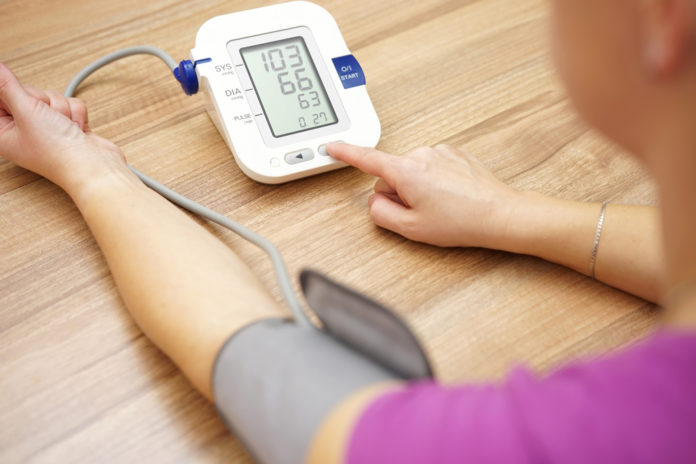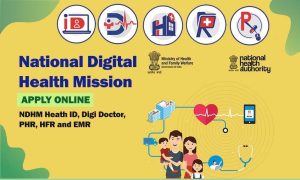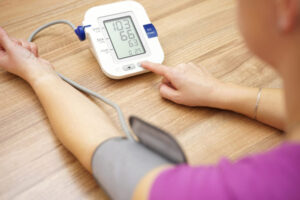How to use a home blood pressure monitor
- Be still. Don’t smoke, drink caffeinated beverages or exercise within 30 minutes before measuring your blood pressure. Empty your bladder and ensure at least 5 minutes of quiet rest before measurements.
- Sit correctly. Sit with your back straight and supported (on a dining chair, rather than a sofa). Your feet should be flat on the floor and your legs should not be crossed. Your arm should be supported on a flat surface (such as a table) with the upper arm at heart level. Make sure the bottom of the cuff is placed directly above the bend of the elbow. Check your monitor’s instructions for an illustration or have your healthcare provider show you how.
- Measure at the same time every day. It’s important to take the readings at the same time each day, such as morning and evening. It is best to take the readings daily however ideally beginning 2 weeks after a change in treatment and during the week before your next appointment.
- Don’t take the measurement over clothes.
If you get a high blood pressure reading
- A single high reading is not an immediate cause for alarm. If you get a reading that is slightly or moderately higher than normal, take your blood pressure a few more times and consult your healthcare professional to verify if there’ s a health concern or whether there may be any issues with your monitor.
- If your blood pressure readings suddenly exceed 180/120 mm Hg, wait five minutes and test again. If your readings are still unusually high, contact your doctor immediately. You could be experiencing a hypertensive crisis.
- If your blood pressure is higher than 180/120 mm Hg and you are experiencing signs of possible organ damage such as chest pain, shortness of breath, back pain, numbness/weakness, change in vision, difficulty speaking, do not wait to see if your pressure comes down on its own.
Information provided by Dr. Gaurav Minocha, who is working as Associate Director- cardiology at Max Hospital, Vaishali, Delhi NCR.





